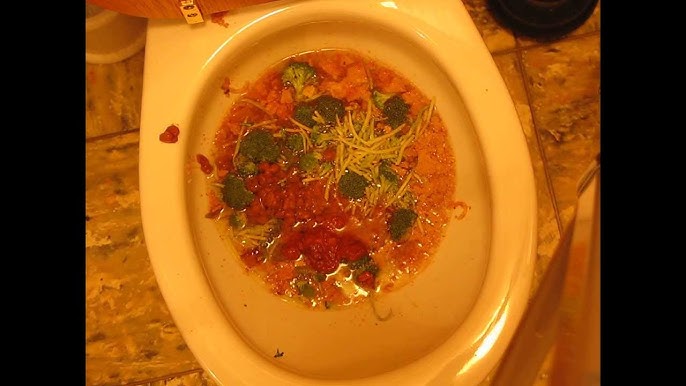How do you really feel when it comes to Think Twice Before Flushing Food Down Your Toilet?

Introduction
Many people are commonly confronted with the issue of what to do with food waste, specifically when it concerns leftovers or scraps. One usual inquiry that develops is whether it's alright to flush food down the bathroom. In this article, we'll explore the reasons that people may think about purging food, the effects of doing so, and alternate techniques for appropriate disposal.
Reasons people could consider flushing food
Lack of awareness
Some individuals might not recognize the prospective harm triggered by flushing food down the bathroom. They might mistakenly believe that it's a harmless method.
Comfort
Purging food down the commode might seem like a quick and easy solution to throwing away undesirable scraps, especially when there's no nearby trash bin available.
Idleness
In many cases, individuals may just choose to flush food out of large idleness, without taking into consideration the consequences of their activities.
Repercussions of flushing food down the toilet
Ecological effect
Food waste that ends up in rivers can contribute to pollution and injury aquatic environments. Additionally, the water used to purge food can strain water resources.
Pipes problems
Purging food can result in clogged up pipes and drains pipes, creating expensive pipes repair work and hassles.
Sorts of food that should not be flushed
Fibrous foods
Foods with coarse appearances such as celery or corn husks can get tangled in pipes and create clogs.
Starchy foods
Starchy foods like pasta and rice can absorb water and swell, leading to blockages in pipes.
Oils and fats
Greasy foods like bacon or cooking oils ought to never be purged down the bathroom as they can strengthen and create clogs.
Appropriate disposal techniques for food waste
Utilizing a garbage disposal
For homes equipped with garbage disposals, food scraps can be ground up and purged via the pipes system. Nevertheless, not all foods are suitable for disposal in this fashion.
Recycling
Particular food packaging materials can be recycled, decreasing waste and minimizing ecological impact.
Composting
Composting is a green method to take care of food waste. Organic products can be composted and utilized to improve soil for gardening.
The importance of proper waste administration
Minimizing environmental injury
Correct waste management practices, such as composting and recycling, assistance lessen contamination and protect natural resources for future generations.
Safeguarding pipes systems
By avoiding the method of flushing food down the bathroom, house owners can stop pricey pipes repairs and maintain the integrity of their plumbing systems.
Conclusion
In conclusion, while it might be alluring to purge food down the commode for comfort, it is necessary to comprehend the potential consequences of this activity. By taking on proper waste administration methods and dealing with food waste sensibly, people can contribute to healthier pipes systems and a cleaner environment for all.
FLUSH FOOD DOWN THE TOILET?
FLUSHING FOOD CAN CAUSE BLOCKED DRAINS IN YOUR HOME
All of the plumbing fixtures in your home are connected to the same sewer pipe outside of your home. This outdoor sewer pipe is responsible for transporting all the wastewater from your home to the Council sewer mains. Even small pieces of food that go down the kitchen sink can cause problems for your sewer. It should therefore be obvious that flushing larger bits of food, such as meat, risks a clog in either the toilet itself or the sewer pipes. Flushing greasy food is even more problematic because oil coagulates when it cools, coating the interior lining of your pipes.
THE TOILET IS NOT A BIN
Food isn’t the only thing that people shouldn’t be flushing down the toilet. People use the toilet to dispose of all kinds of things such as tampons, makeup wipes, dental floss, kitty litter and even underwear. Water goes to great lengths to educate residents about the high costs and stress placed on wastewater treatment systems simply from people flushing the wrong stuff down the toilet. It costs taxpayers millions of dollars each year, and homeowners thousands in blocked drain repairs.
FLUSHING FOOD IS A WASTE OF WATER
Flushing food is a waste of our most precious resource - water. In June this year Level 1 water restrictions were introduced to protect water supply from drought conditions. Much of New South Wales continues to be affected by prolonged drought with recent figures revealing up to 97 per cent of the state remains in drought. Depending on whether you have a single or dual flush toilet, every single flush uses between five and 11 litres of water. In the current climate this is a huge amount of water to be wasting on flushing food that should be placed in the bin (or better yet, the compost).
https://www.jabplumbingsolutions.com.au/blog/can-you-flush-food-down-the-toilet

As an avid reader about Is it safe to flush food (especially rice) down the toilet?, I think sharing that piece of content was worthwhile. Sharing is good. Helping people is fun. Thank you for being here. Revisit us soon.
Book Your Appointment